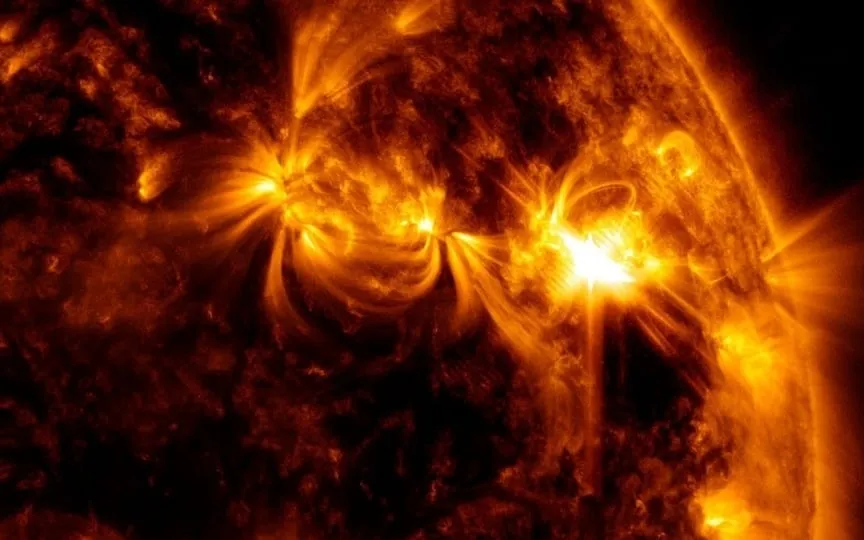North American Radio Communications Disrupted by Powerful Solar Flare
In recent weeks, there has been a notable rise in solar activity, resulting in a series of powerful solar storms. The Sun is currently in its 11-year solar cycle and is expected to reach its peak next year, making these storms even more intense and potentially hazardous to satellites, power grids, internet infrastructure, and other systems. On Monday, a particularly strong solar flare emitted by the Sun caused a blackout of radio and navigation signals in North America, as the energetic particles reached our planet.
A solar flare
The solar flare, rated X1.5, was the 20th X flare known as the most powerful solar flare cluster. According to solar physicist Keith Strong, the solar flare was a category 3 on a five-point scale developed by the US National Oceanic and Atmospheric Administration (NOAA).
“The X1.5 Flare caused an R3 (strong) radio blackout event on the daylight side of the Earth (most of the US and Canada and the Pacific Ocean), Strong said on X (formerly Twitter). “Frequencies below 5 MHz were the hardest hit and navigation signals were degraded.”
The solar flare occurred immediately after two days of weaker X-ray flare that occurred on August 5. A total of two massive X-level solar flares occurred in the last two days, but that’s not all, the sun is releasing several moderate solar flares and Three have already occurred in the last 24 hours. space.com reports.
Britain’s space weather forecaster, the Met Office, issued a warning because of charged solar particles in the Earth’s atmosphere that could cause a mild solar radiation storm. These charged particles can be harmful to both passengers and crew of aircraft flying over the polar regions, as well as astronauts in space. In addition, they can also damage satellites.
Earlier experts reported that two coronal mass ejections (CMEs) hurtled toward Earth. These CMEs can cause a geomagnetic storm when it touches the Earth’s magnetic field. However, the National Oceanic and Atmospheric Administration (NOAA) model reports that the two CMEs have merged, cannibalizing the first, making it more intense and powerful. This CME could lead to a G3 storm that could disrupt power grids and telecommunications systems.




